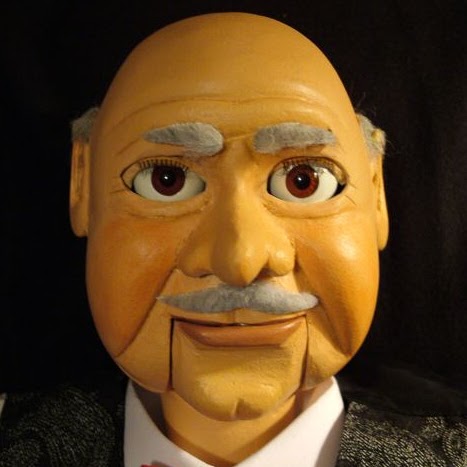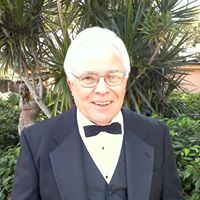John Mark Matheny
age ~63
from Pacifica, CA
- Also known as:
-
- John M Matheny
- Monica J Matheny
- John M Metheny
- John Mathney
- Monica N
- Phone and address:
-
263 Bayberry Cir, Sharp Park, CA 94044
650 733-7094
John Matheny Phones & Addresses
- 263 Bayberry Cir, Pacifica, CA 94044 • 650 733-7094
- Santa Clara, CA
- Millbrae, CA
- Sausalito, CA
- Novato, CA
- San Francisco, CA
- Bellevue, WA
- Schaumburg, IL
- Moraga, CA
- San Mateo, CA
Work
-
Company:Turf & ind equipment co
-
Address:2715 Lafayette St, Santa Clara, CA 95050
-
Phones:408 727-5660
-
Position:President
-
Industries:Retail Nurseries, Lawn and Garden Supply Stores
Specialities
Business Litigation • Business Transactions • Real Property Litigation • Entertainment • Employment & Labor • Personal Injury • Privacy
Lawyers & Attorneys

John Matheny - Lawyer
view sourceSpecialties:
Business Litigation
Business Transactions
Real Property Litigation
Entertainment
Employment & Labor
Personal Injury
Privacy
Business Transactions
Real Property Litigation
Entertainment
Employment & Labor
Personal Injury
Privacy
ISLN:
901549042
Admitted:
1990
University:
University of California at Davis, B.S., 1986
Law School:
University of San Diego, J.D., 1990
Name / Title
Company / Classification
Phones & Addresses
President
Turf & Ind Equipment CO
Retail Nurseries, Lawn and Garden Supply Stores
Retail Nurseries, Lawn and Garden Supply Stores
2715 Lafayette St, Santa Clara, CA 95050
Website: turfandindustrial.com
Website: turfandindustrial.com
General Manager Premium Mobile Experiences
Microsoft Corporation
Prepackaged Software
Prepackaged Software
1 Microsoft Way, Redmond, WA 98052
President
I V G Inc
Ret Nursery/Garden Supplies Repair Services
Ret Nursery/Garden Supplies Repair Services
2715 Lafayette St, Santa Clara, CA 95050
President
G.I.V., INC
2715 Lafayette St, Santa Clara, CA 95050
President
PACIFIC BAY ASSET COMPANY
2715 Lafayette St, Santa Clara, CA 95050
President
Turf & Indl Equipment
Car Sales · Nursery, Garden Center, and Farm Supply Stores · Outdoor Power Equip Stores
Car Sales · Nursery, Garden Center, and Farm Supply Stores · Outdoor Power Equip Stores
2715 Lafayette St #D, Santa Clara, CA 95050
408 727-5660, 408 727-5875, 800 655-8873
408 727-5660, 408 727-5875, 800 655-8873
Principal
John Matheny
Business Services at Non-Commercial Site
Business Services at Non-Commercial Site
145 Laurel Ave, Menlo Park, CA 94025
4M TURF CARE INC
Resumes

John Matheny
view sourcePosition:
Senior Vice President at Yahoo!
Location:
San Francisco Bay Area
Industry:
Computer Software
Work:
Yahoo! - San Francisco Bay Area since Sep 2010
Senior Vice President
Microsoft - San Francisco Bay Area Aug 2001 - Aug 2010
Partner & General Manager
WebTV Networks - San Francisco Bay Area Aug 1995 - Jul 2001
Vice President
Streetlight Software - San Francisco Bay Area 1992 - 1995
Co-Founder & CEO
Apple Computer - San Francisco Bay Area 1989 - 1992
Sr Software Engineer
Senior Vice President
Microsoft - San Francisco Bay Area Aug 2001 - Aug 2010
Partner & General Manager
WebTV Networks - San Francisco Bay Area Aug 1995 - Jul 2001
Vice President
Streetlight Software - San Francisco Bay Area 1992 - 1995
Co-Founder & CEO
Apple Computer - San Francisco Bay Area 1989 - 1992
Sr Software Engineer
Skills:
Product Management
Cloud Computing
Mobile Applications
Mobile Devices
Distributed Systems
SaaS
Strategic Leadership
Engineering Leadership
Software Engineering
Cloud Computing
Mobile Applications
Mobile Devices
Distributed Systems
SaaS
Strategic Leadership
Engineering Leadership
Software Engineering

John Matheny
view sourceLocation:
United States

President At Turf And Industrial Equipment
view sourcePosition:
President at Turf and Industrial Equipment
Location:
San Francisco Bay Area
Industry:
Automotive
Work:
Turf and Industrial Equipment since Jun 2007
President
President
Education:
University of Arkansas at Fayetteville 1980 - 1984
BSBA, Accouting, Quantitative Analysis, Data Processing
BSBA, Accouting, Quantitative Analysis, Data Processing

John Matheny
view sourceLocation:
United States

John Matheny
view sourceLocation:
United States
Us Patents
-
Object-Oriented Event Notification System With Listener Registration Of Both Interests And Methods
view source -
US Patent:6424354, Jul 23, 2002
-
Filed:Apr 1, 1999
-
Appl. No.:09/287172
-
Inventors:John R. Matheny - Mountain View CA
Christopher White - Mountain View CA
David R. Anderson - Cupertino CA
Arn J. Schaeffer - Belmont CA -
Assignee:Object Technology Licensing Corporation - Cupertino CA
-
International Classification:G06F 1300
-
US Classification:345619, 345700, 345764
-
Abstract:An event notification system for propagating object-change information. The notification system supports change notification without queues in an object-based application or operating system and can be scaled to propagate large numbers of events among a large plurality of objects. The event notification system interconnects a plurality of event source and event receiver objects. Any object, such as a command object, may operate as either an event receiver object, an event source object or both. A notification object is created by a source object to transport, from a source to a receiver, descriptive information about a change, which includes a particular receiver object method and a pointer to the source object that sent the notification. A receiver object must register with a connection object its âinterestâ in receiving notification of changes; specifying both the event type and the particular source object of interest. After establishing such connections, the receiver object receives only the events of the specified type for the source objects âof interestâ and no others.
-
System And Method For Encouraging Viewers To Watch Television Programs
view source -
US Patent:6766524, Jul 20, 2004
-
Filed:May 8, 2000
-
Appl. No.:09/566695
-
Inventors:John R. Matheny - San Francisco CA
Daniel J. Zigmond - Carnation WA -
Assignee:WebTV Networks, Inc. - Mountain View CA
-
International Classification:H04H 900
-
US Classification:725 23, 725 22, 725 9, 725 17, 725 20, 725 24, 705 14
-
Abstract:Described are methods and apparatus for encouraging viewers to pay attention to television programs, commercials in particular, by offering viewers some incentive to watch. In one embodiment, viewers are notified that they can receive frequent-flier miles for answering one or more simple questions at the conclusion of the commercial. To verify that the viewer paid attention to the commercial, the answer to the question may be based on the content of the commercial. A sponsor might ask, for example, that the viewer identify the name of the sponsor or the color of an announcers shirt. A correct answer indicates that the viewer watched the commercial, and that the viewer is therefore entitled to some reward. For example, viewers who watch the commercial may be entered in a prize drawing, or may receive prize points, such as frequent-flier miles. In other embodiments, viewers may verify that they watched a given program by selecting an icon or pressing a button on a remote control.
-
Scheduling The Recording Of Television Programs
view source -
US Patent:7159232, Jan 2, 2007
-
Filed:Nov 16, 1999
-
Appl. No.:09/441708
-
Inventors:Dean J. Blackketter - San Francisco CA, US
Timothy F. Park - Menlo Park CA, US
Daniel J. Zigmond - Sunnyvale CA, US
Sharon F. Glusker - Belmont CA, US
John Matheny - San Francisco CA, US -
Assignee:Microsoft Corporation - Redmond WA
-
International Classification:H04N 5/445
-
US Classification:725 38, 725 42, 725 46, 725 58, 386 83
-
Abstract:A television receiving system displays an advertisement for a future television program. If the future television program is identified as recordable, the system also displays an option to set a reminder for the advertised program and/or an option to record the advertised program on a video recorder. If a viewer of the advertisement selects the reminder option, then a reminder is programmed in the system. If the viewer selects the record option, then the system automatically programs the video recorder to record the advertised program. If the viewer has established an interactive session during a television advertisement, and has not completed the interactive session when the advertisement ends, then the current television program is paused until the interactive session is completed.
-
Method And Apparatus For Indexing Video Programs
view source -
US Patent:7197758, Mar 27, 2007
-
Filed:Apr 27, 2000
-
Appl. No.:09/561390
-
Inventors:Dean J. Blackketter - San Francisco CA, US
Timothy F. Park - Menlo Park CA, US
Daniel J. Zigmond - Menlo Park CA, US
John R. Matheny - San Francisco CA, US -
Assignee:Microsoft Corporation - Redmond WA
-
International Classification:H04N 5/445
H04N 5/00
H04N 7/173
G06F 13/00
G06F 3/00 -
US Classification:725 37, 725 38, 725 93, 725116, 386125
-
Abstract:A television program is received that includes an index that identifies multiple television program segments contained in the television program. The index of program segments is displayed to a television viewer, and the television viewer is allowed to select at least one program segment for recording. The index of program segments can identify the name of each program segment, the time period during which each program segment is transmitted, the program type for each program segment, the content rating for each program segment, or whether the viewer is required to watch a particular program segment. The selected program segments may be recorded on a video recorder. The television viewer is also allowed to select the order of viewing of the program segments.
-
Scheduling The Recording Of Television Programs
view source -
US Patent:7305692, Dec 4, 2007
-
Filed:Apr 27, 2005
-
Appl. No.:11/115719
-
Inventors:Dean J. Blackketter - San Francisco CA, US
Timothy F. Park - Menlo Park CA, US
Daniel J. Zigmond - Menlo Park CA, US
Sharon F. Glusker - Belmont CA, US
John R. Matheny - San Francisco CA, US -
Assignee:Microsoft Corporation - Redmond WA
-
International Classification:H04N 5/445
H04N 5/91 -
US Classification:725 58, 725 32, 725 42, 386 83
-
Abstract:A television receiving system displays an advertisement for a future television program. If the future television program is identified as recordable, the system also displays an option to set a reminder for the advertised program and/or an option to record the advertised program on a video recorder. If a viewer of the advertisement selects the reminder option, then a reminder is programmed in the system. If the viewer selects the record option, then the system automatically programs the video recorder to record the advertised program. If the viewer has established an interactive session during a television advertisement, and has not completed the interactive session when the advertisement ends, then the current television program is paused until the interactive session is completed.
-
Television Program Pause For Interactive Sessions
view source -
US Patent:7676138, Mar 9, 2010
-
Filed:Apr 27, 2005
-
Appl. No.:11/115676
-
Inventors:Dean J. Blackketter - San Francisco CA, US
Timothy F. Park - Menlo Park CA, US
Daniel J. Zigmond - Menlo Park CA, US
Sharon F. Glusker - Belmont CA, US
John R. Matheny - San Francisco CA, US -
Assignee:Microsoft Corporation - Redmond WA
-
International Classification:H04N 5/78
-
US Classification:386 68, 386125, 725133
-
Abstract:A television receiving system displays an advertisement for a future television program. If the future television program is identified as recordable, the system also displays an option to set a reminder for the advertised program and/or an option to record the advertised program on a video recorder. If a viewer of the advertisement selects the reminder option, then a reminder is programmed in the system. If the viewer selects the record option, then the system automatically programs the video recorder to record the advertised program. If the viewer has established an interactive session during a television advertisement, and has not completed the interactive session when the advertisement ends, then the current television program is paused until the interactive session is completed.
-
System And Method For Encouraging Viewers To Watch Television Programs
view source -
US Patent:7840975, Nov 23, 2010
-
Filed:Apr 29, 2004
-
Appl. No.:10/835196
-
Inventors:John R. Matheny - San Francisco CA, US
Daniel J. Zigmond - Carnation WA, US -
Assignee:Microsoft Corporation - Redmond WA
-
International Classification:H04N 7/16
H04N 7/10
H04N 7/025 -
US Classification:725 23, 725 32, 725 36
-
Abstract:Described are methods and apparatus for encouraging viewers to pay attention to television programs, commercials in particular, by offering viewers some incentive to watch. In one embodiment, viewers are notified that they can receive frequent-flier miles for answering one or more simple questions at the conclusion of the commercial. To verify that the viewer paid attention to the commercial, the answer to the question may be based on the content of the commercial. A sponsor might ask, for example, that the viewer identify the name of the sponsor or the color of an announcer's shirt. A correct answer indicates that the viewer watched the commercial, and that the viewer is therefore entitled to some reward. For example, viewers who watch the commercial may be entered in a prize drawing, or may receive prize points, such as frequent-flier miles. In other embodiments, viewers may verify that they watched a given program by selecting an icon or pressing a button on a remote control.
-
Scheduling The Recording Of Television Programs
view source -
US Patent:7885517, Feb 8, 2011
-
Filed:Apr 27, 2005
-
Appl. No.:11/115669
-
Inventors:Dean J. Blackketter - San Francisco CA, US
Timothy F. Park - Menlo Park CA, US
Daniel J. Zigmond - Menlo Park CA, US
Sharon F. Glusker - Belmont CA, US
John R. Matheny - San Francisco CA, US -
Assignee:Microsoft Corporation - Redmond WA
-
International Classification:H04N 5/765
-
US Classification:386296, 386278, 386200, 725133
-
Abstract:A television receiving system displays an advertisement for a future television program. If the future television program is identified as recordable, the system also displays an option to set a reminder for the advertised program and/or an option to record the advertised program on a video recorder. If a viewer of the advertisement selects the reminder option, then a reminder is programmed in the system. If the viewer selects the record option, then the system automatically programs the video recorder to record the advertised program. If the viewer has established an interactive session during a television advertisement, and has not completed the interactive session when the advertisement ends, then the current television program is paused until the interactive session is completed.
Classmates

John Matheny
view sourceSchools:
Aguilar Elementary School Aguilar CO 2001-2005
Community:
Mileene Sanchez, Nicole Townsend, Anjana Patel, Kerem Kaan, Katy Lynch

John Matheny
view sourceSchools:
Greystone Christian High School Mobile AL 1960-1966, Azalea Middle School Mobile AL 1966-1968
Community:
Allen Hargrove, Debra Kehler

John Matheny
view sourceSchools:
Charleston Catholic High School Charleston WV 1970-1974
Community:
Richard Norcross, Catherine Kee, Joyce Guinn, Gary Jarrell, Patrick Parker, Dan Moriarty

John Matheny
view sourceSchools:
Waterman High School Waterman IL 1975-1979
Community:
Jason Lieving, Robert Alford, Marilyn Listy, Steve O'bryan

John Matheny
view sourceSchools:
Athens High School Athens OH 1991-1995
Community:
Ian James, Susan Nouse, Oscar Rodriguez, Debra Lamp, Rick Sheets

John Matheny
view sourceSchools:
Waller Elementary School Bossier City LA 1967-1971, University Elementary School Shreveport LA 1971-1973, Youree Drive Middle School Shreveport LA 1973-1976
Community:
Rebecca Burcks, Catherine Shaw, Robert Walker, William Billy

Barthe High School, Metai...
view sourceGraduates:
Chip Doussan (1968-1972),
John Angel (1967-1971),
John Matheny (1966-1970)
John Angel (1967-1971),
John Matheny (1966-1970)

University Elementary Sch...
view sourceGraduates:
John Matheny (1971-1973),
Shelia Skinner (1976-1980),
Gary Jones (1978-1980),
Arica Martin (1987-1991),
Maureen Hannon (1970-1971),
Rebecca Lewis (1987-1990)
Shelia Skinner (1976-1980),
Gary Jones (1978-1980),
Arica Martin (1987-1991),
Maureen Hannon (1970-1971),
Rebecca Lewis (1987-1990)
Googleplus

John Matheny

John Matheny

John Matheny

John Matheny

John Matheny

John Matheny
Flickr

John Matheny
view source
John Matheny
view source
John Matheny
view source
John Matheny
view source
John Matheny
view source
John Matheny
view source
John Matheny
view source
John Matheny
view sourceYoutube
Myspace
Get Report for John Mark Matheny from Pacifica, CA, age ~63



















